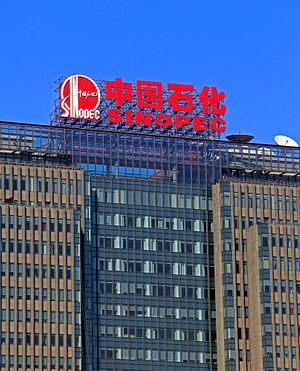Reforming China’s state-owned enterprises (SOEs) is a top priority, clearly stated after the Third Plenum of the Chinese Communist Party’s 18th Congress last October and the National People’s Congress this past March. The motivation is to promote continued economic growth and reduce economic inefficiencies that SOEs have, to some extent, epitomized, and, in doing so, to attract private capital to this sector.
SOEs have been reforming for years, but continue to face problems of profitability and efficiency. Scholarly studies show that if credit subsidies to SOEs were accounted for, profitability would be negligible. The enterprises produce lower levels of output than private sector counterparts and often have lower levels of productivity. The enterprises, however, are central to the government’s political economy: Communist control over the state apparatus necessarily includes control over the most essential economic organs. This is why these enterprises have continued to exist despite the thirty-year shift toward a market economy.
The tight interconnection between state apparatus and economically critical firms has had other repercussions besides low efficiency. The National Audit Office recently uncovered fraud in 11 SOEs, finding that some managers spent company funds on luxury goods and entertainment. This is in addition to 35 cases of bribery and embezzlement uncovered earlier this year. Corruption associated with SOEs and, more broadly, state assets owned by the “princelings” and other cronies has recently been exposed in a comprehensive state crackdown on corruption.
SOEs at the central level include the largest and most important firms in China, concentrated in the energy, aviation, technology, steel, shipping, mining, telecom and financial sectors. These are regulated by the State-owned Asset Supervision and Administration Commission of the State Council (SASAC). These enterprises will expand mixed ownership: currently, 52 percent of centrally owned SOEs or their subsidiaries already host some type of private investment according to SASAC. The role played by these private investors has thus far been purposely rather restricted, but this may change over time in some SOEs.
In the past, 100 percent government control over security-critical industries has been directed policy. These have included the defense, energy, telecom, aviation and shipping industries, as per the State Council. Expansion of mixed ownership was allowed in other sectors, and this type of policy is likely to persist. The new policy directive for central state control can be thought of as grasping the large and security-critical, while letting go of the small and less-consequential. Recent moves from companies like Sinopec (China’s largest oil refining company) do not contradict this policy. Although Sinopec has recently sold off 30 percent of its distribution business to third parties, most of this has constituted less consequential business components: mainly gas station convenience stores.
Local and provincial (used here synonymously) SOEs tend to be smaller than centrally owned companies and are located in a wider variety of industries. Local governments have proposed various reform measures for their local SOEs. Local SASACs in Guangdong, Shanghai, and Chongqing have announced various plans for SOE reform and opening up to mixed ownership, and other local SASACs are expected to follow suit. Some analysts have even speculated that local governments will sell assets to private investors in order to rid themselves of part of their debt burden, but this remains to be seen.
Although increasing profitability and mixed ownership can be positive outcomes of SOE reform, two caveats remain. Despite the fact that the central government has cracked down on corruption, precedent warns us to be wary of SOE asset sales. SOE managers have embezzled state assets through management buy-outs of enterprise shares (in particular) in a variety of ways, often through the purchase of non-circulating shares. A lack of transparency in these negotiations allowed the transactions to be carried out undetected. Monitoring of the ownership change process is therefore essential.
The second caveat is that once mixed ownership types are allowed and ownership by central or local governments is reduced, directly held state assets will decline. Currently, assets of both central and local SOEs amount to about 94 trillion RMB. If some assets are to be partly privatized, the state had better ensure that its debt is kept low; until this point, analysts have pointed out that government debt issues can be resolved by selling off state assets. However, once they are sold, the ability to repeat the exercise in the future diminishes. Hence, sales of ownership shares in SOEs had better be carried out conscientiously, and with an eye to perpetuating profits in the future.
Analysts have recently written extensively about the prospects of SOE reform. We wait to find out whether this time will be deeper, better, and more meaningful than past reforms. With China’s declining GDP growth, it will be hoping that SOE profitability can be improved. If so, then the country’s economic restructuring targets are more likely to be met.

































